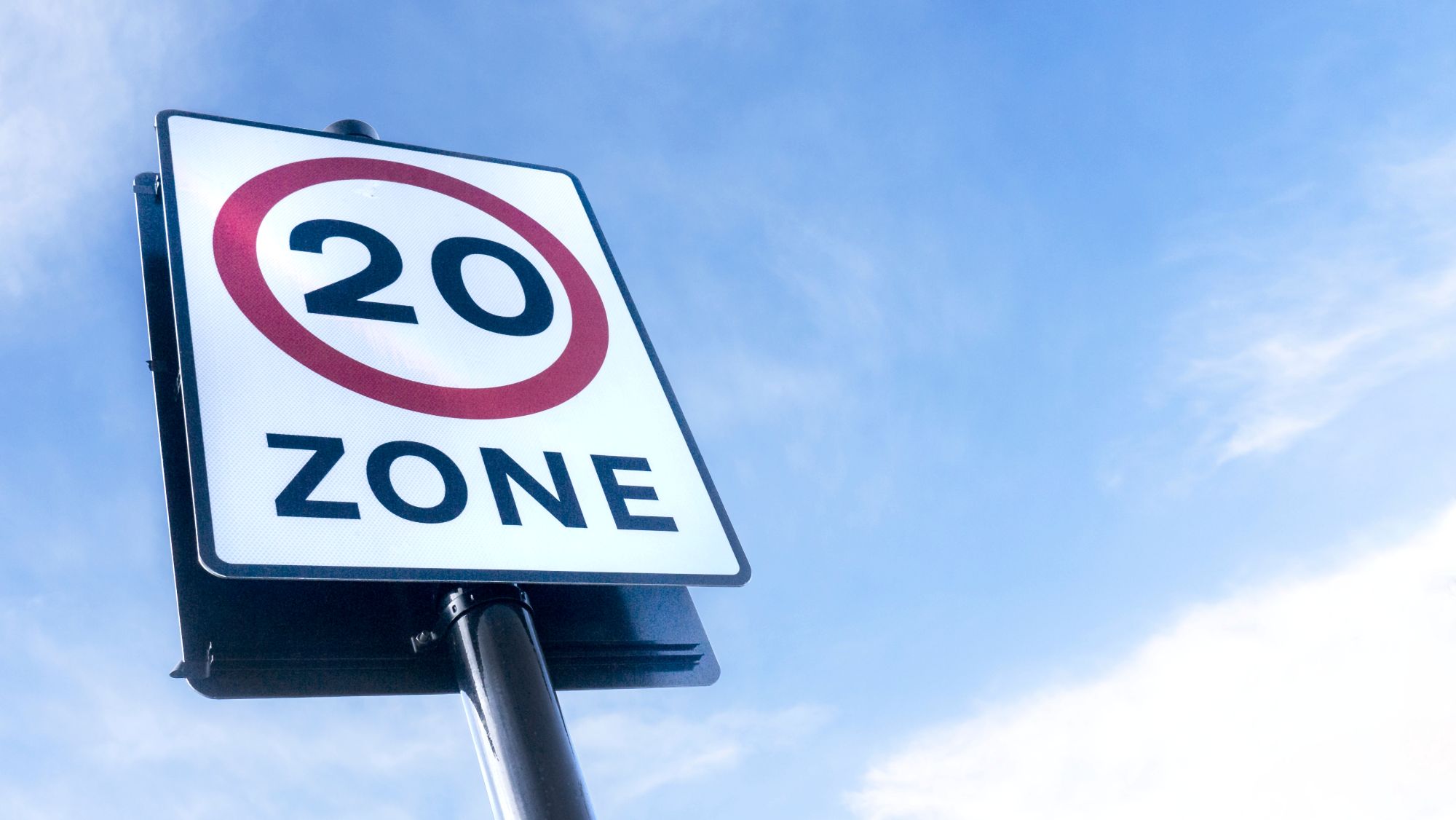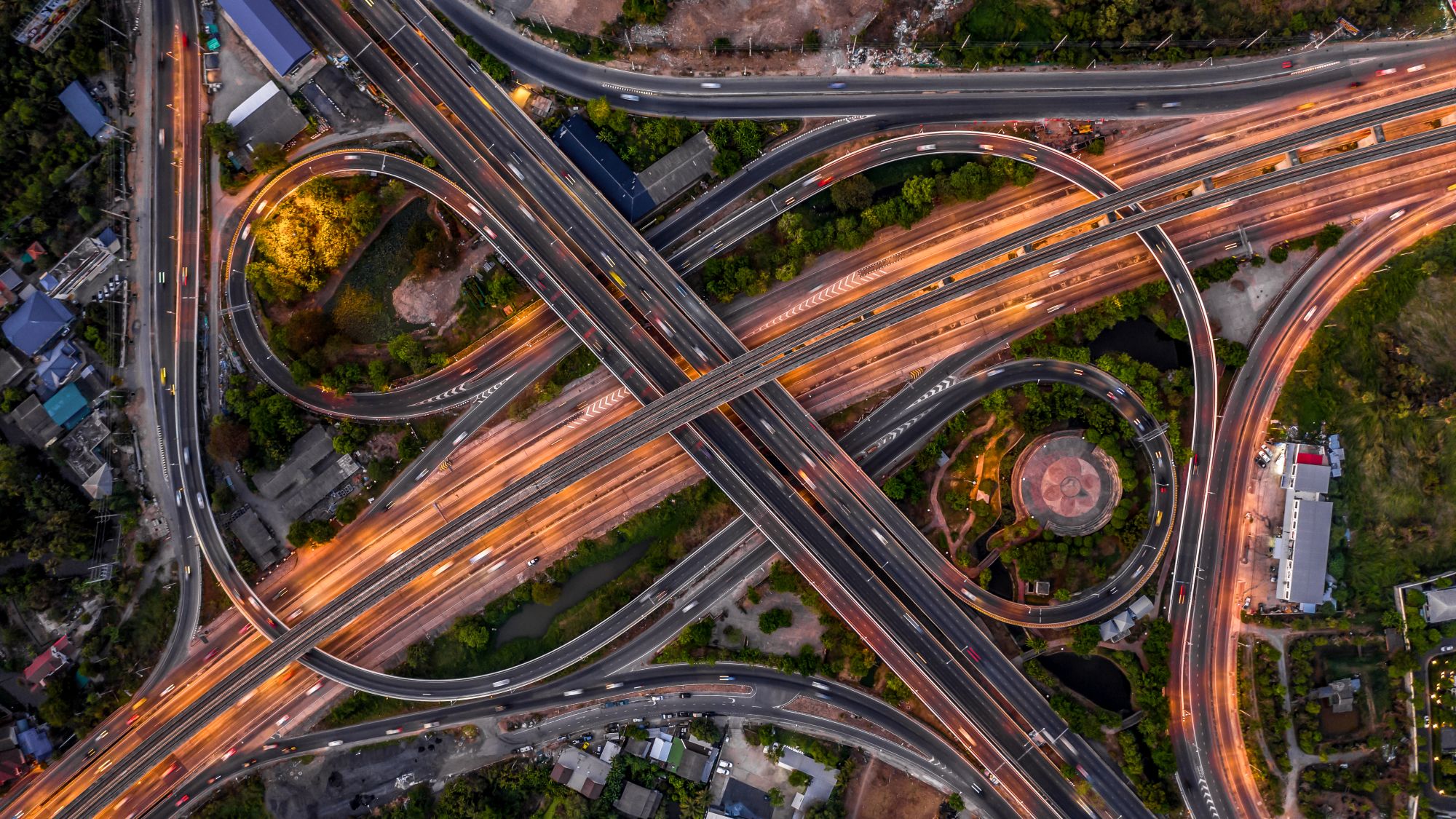
Susie Jones
Kakšne so posledice omejitev hitrosti na 20 km/h za vozne parke?
Ustvarjeno: 16. 04. 2025
•
Posodobljeno: 16. 04. 2025
Leta 2023 so bila 188 težka tovorna vozila udeležena v trčenjih, ki so imela za posledico smrtne žrtve, kar je sicer manj kot leta 2022, vendar je kljub temu zaskrbljujoč podatek. Te nesreče so bile lahko posledica več dejavnikov, kot so utrujenost voznika, slabo vzdrževanje vozila, vremenske razmere ali dejanja drugih udeležencev v prometu. Vendar pa podatki dobrodelne organizacije Brake, ki skrbi za varnost v cestnem prometu, kažejo, da je bila pri 58 % smrtnih žrtev, povezanih s prometom, hitrost prijavljena kot dejavnik varnosti v cestnem prometu. V tem blogu bomo raziskali, kako bi lahko uvedba omejitev hitrosti na 20 km/h vplivala na delovanje voznega parka in zmanjšala število smrtnih žrtev.
Kje se zgodijo nesreče s težkimi tovornimi vozili?
Po podatkih EROS se je le 10 % trčenj težkih tovornih vozil zgodilo na avtocesti - preostalih 90 % se je bolj verjetno zgodilo na mestni ali podeželski cesti. Na podeželskih cestah se vozniki tovornjakov srečujejo z ozkimi prostori, ostrimi zavoji in interakcijami z ranljivimi udeleženci v prometu, kot so kolesarji in pešci, kar povečuje verjetnost nesreč. Mestna območja predstavljajo večje tveganje za voznike tovornjakov zaradi gostejšega prometa, pogostih postankov, dejavnosti pešcev in zapletene ureditve cest - v kombinaciji z nepredvidljivostjo mestnih cest predstavljajo večjo nevarnost za voznike tovornjakov.
Vpliv območij z omejeno hitrostjo 20 km/h.
Podatki, ki jih je objavila valižanska vlada, kažejo, da bo leta 2024 na mestnih cestah 100 žrtev manj kot v enakem obdobju leta 2023, preden je bila na mestnih območjih uveljavljena omejitev hitrosti 20mph.
Program podpirajo organizacije, kot sta Brake in Cycling UK, zdaj pa strokovnjaki za upravljanje voznih parkov FleetCheck spodbujajo prevozna podjetja, da se pridružijo programu. Trdijo, da bo prehod s 30 km/h na 20 km/h minimalno vplival na učinkovitost voznega parka, in poudarjajo, da bi s tem vsako leto rešili življenja.

Kaj menijo vozni parki in vozniki o omejitvi hitrosti na 20 km/h?
Po podatkih družbe FleetCheck so imeli prevozniki do pobude mešane občutke. Nekateri so menili, da spremembe ovirajo učinkovitost, in trdili, da lahko nižje omejitve hitrosti nekatere flote prisilijo v zmanjšanje števila dostav, ki jih lahko opravijo v določenem obdobju.
Vozniki na straneh družabnih medijev SNAP so bili do predloga zelo zadržani. Eden od voznikov je zapisal:
"Kdo bo podprl več območij s hitrostjo 20 km/h? Težava je v celotnem standardu vožnje. Odkar smo se vrnili iz zaporne cone, je standard vožnje hudičevo slab, vključno z osebnimi avtomobili, kombiji in tovornjaki."
Na družabnih omrežjih je bilo razpoloženje enako, saj mnogi spremembe niso podprli.
Prednosti več območij z omejeno hitrostjo 20 km/h.
Območja z zmanjšano hitrostjo imajo za voznike tovornjakov več prednosti.
Nižje hitrosti izboljšajo reakcijski čas in skrajšajo zavorno pot, kar olajša izogibanje trčenju, zlasti v mestih.
Pri tovornjakih je manjša obraba vozila, če so omejitve hitrosti manjše.
ovire, s katerimi se lahko soočijo podjetja, ki se ukvarjajo z voznim parkom.
Kot smo že omenili, so nekatera podjetja z voznimi parki zaskrbljena, da bi nižje omejitve hitrosti lahko zmanjšale število dostav, ki jih lahko opravijo v določenem obdobju. Vozni park bi se lahko soočil tudi z naslednjimi izzivi:
daljši čas potovanja: vpliva na časovno občutljive dobave ter na načrtovanje in pričakovanja strank.
Planiranje poti: podjetja bodo morda morala prilagoditi poti zaradi nižjih hitrosti.
Skladnost: naložbe v dodatno usposabljanje voznikov za zagotavljanje skladnosti z novimi omejitvami hitrosti bodo ključnega pomena.
Čeprav lahko ta vprašanja predstavljajo dodatne izzive za podjetja, ki se ukvarjajo z voznim parkom, pa je mnoga od njih mogoče obvladovati proaktivno. Mnogi trdijo, da so dolgoročne koristi za varnost večje od ovir.

Številke govorijo same zase.
V ponovljeni kampanji z naslovom Nevarne avtoceste je SNAP opredelil najbolj nevarne lokacije GB. Poglobili smo se in odkrili, katerim cestam bi lahko koristilo zmanjšanje omejitve hitrosti.
SNAP je ugotovil, da so najbolj nevarne ceste na jugovzhodu države. Kent ima najnevarnejše ceste v Veliki Britaniji in predlaga cilj nič smrtnih žrtev na cestah na kentskem avtocestnem omrežju do leta 2050. Katere ceste so najbolj zaskrbljujoče?
Cesta A254: Kratka cesta, ki meri le štiri milje, je bila leta 2018 razglašena za najbolj tvegano cesto v Veliki Britaniji. Poročilo je izpostavilo odsek ceste A254 med križiščem z A28 pri Margatu in križiščem z A255 pri Ramsgatu. Omejitev hitrosti na tem odseku se giblje med 30 in 40 km/h - zaradi pozidanih območij in gostega prometnega toka iz pristanišča Dover je ta cesta še posebej nevarna za kolesarje, pešce in druge udeležence v prometu. Ali bi na tem odseku ceste lahko uvedli nižje omejitve hitrosti?
Cesta A252: Cesta A252, ki je znana po velikem številu prometnih nesreč, je dolga 8,7 km. Leta 2020 so se začela dela za zmanjšanje števila in resnosti nesreč, med spremembami pa je tudi zmanjšanje hitrosti s 60 km/h na 50 km/h na tem odseku, razen tam, kjer veljajo nižje omejitve. Vendar ali je to dovolj, da se cesta znebi slovesa ene najslabših cest v Veliki Britaniji?
Na vrhu seznama sta bila tudi Surrey in Essex, kjer se je v zadnjih petih letih skupaj zgodilo 30.378 nesreč. Visoke stopnje nesreč v Surreyju je mogoče pripisati mešanici naseljenih mest in podeželskih cest. Zaradi bližine Londona in glavnih avtocest je več trčenj.
M25: Znana tudi kot londonska obvozna avtocesta M25 je ena od najbolj prometnih cest v Veliki Britaniji in hkrati druga najdaljša obvoznica v Evropi. Med letoma 2007 in 2016 so poročali o 7 673 nesrečah in 80 smrtnih žrtvah. Ker gre za ključno avtocesto, bi bilo prilagajanje hitrosti že pri 20 miljah na uro nesmiselno. Toda ali bi M25 koristila območja omejene hitrosti?
A3: Cesta A3, ki je dolga 67 kilometrov, je zaradi gostega prometa, omejitev hitrosti in odsekov s slabimi voznimi razmerami lahko zahtevna za vožnjo.
Pogosto zastavljena vprašanja
Kakšna je največja dovoljena hitrost za tovornjake?
Vozniki tovornjakov morajo upoštevati stroge predpise o hitrosti. Te omejitve veljajo zaradi velikosti, teže in zavorne zmogljivosti tovornjaka.
Ednoprometne ceste: Tovornjak z maso nad 7,5 tone lahko vozi z največjo hitrostjo 50 km/h.
Obojestranske ceste: 60 km/h je najvišja dovoljena hitrost za tovornjake nad 7,5 tone.
Motorne ceste: Vozniki tovornjakov na avtocesti ne smejo voziti hitreje od 60 km/h.
Predpisi za omejevanje hitrosti v Združenem kraljestvu V Združenem kraljestvu morajo biti v vsako tovorno vozilo vgrajene naprave za omejevanje hitrosti, ki omejujejo največjo dovoljeno hitrost vozila.
Zakonske zahteve v Združenem kraljestvu: Vsa tovorna vozila, težja od 3,5 tone, morajo imeti omejevalnik hitrosti nastavljen na 56 milj na uro.
Kako delujejo: Omejevalniki hitrosti omejujejo dovod goriva v motor, ko vozilo doseže nastavljeno hitrost, in tako vozniku preprečujejo, da bi presegel omejitev.
Ali zasebni tovornjak potrebuje omejevalnik hitrosti?
Zasebni tovornjak ne potrebuje omejevalnika hitrosti, razen če se uporablja v komercialne namene. Če vaše vozilo ne potrebuje omejevalnika hitrosti, morate to sporočiti ob pregledu MOT, tako da izpolnite obrazec [izjava o omejevalniku hitrosti] (https://www.gov.uk/government/publications/hgv-speed-limiter-exemption-declaration-form).



